Today I dragged myself out of bed, far too early for full consciousness, and on a rare day off, determined to go for a solo morning ride.
If you are hoping to find great technical detail, cranks length selections, tyre
choices, you will be disappointed. If you expect to find descriptions of my superbly skilled moments in the ride, then sorry, there were none. On fairly easy terrain I stopped counting the UPDs at 10. I could have probably stopped counting at 20, maybe even 30. Those looking at the accompanying pictures will only find a very basic cheap unicycle, so nothing to excite them there either. But I hope that those who enjoy a simple unchallenging ride in gorgeous surroundings will enjoy it. It contains so little unicycle specifics, that I wondered whether to post in JC.
I had walked the route before a couple of times, and now hoped I was finally good enough to be able to ride it. I wasn’t, as you will see. I was given a lift to the Ring o’ Bells pub, in Marple, Cheshire for the start of my ride, somewhat before 7.00AM. My driver was very kind considering his lack of sleep, complaining only that the pub was closed at this early hour. As I often do, I had chosen to ride a canal towpath and this pub is but a few yards from the Macclesfield Canal. I rode to the bridge and then descended the slope, walking. The bridge is a fascinating curly design, which in the past enabled horses to change sides of the canal without having to unhook the boat rope.
The slopes are steep, and cobbled, and I was neither daft enough and nor skilled enough to try to ride them, even in the dry. I was worried because as the car disappeared into the distance, some gentle rain had begun to fall, and I was totally unprepared for riding in the wet. But it eased and then stopped after a couple of minutes sheltering beneath the bridge.
Back round and across the bridge, and the towpath is a wide, flat section passing by some boat moorings. A few narrowboat owners are getting their first taste of the morning air and wish me a pleasant good morning. At the end of this section, the wall and the land behind it have collapsed across the towpath. A scattering of pebbles has been placed across the grass as a bypass pathway, and they cause my first UPD of the day. I rode across them nervously, and they rewarded me for doing so.
A few more yards and I reach the end of the Macclesfield Canal, for here it joins the Peak Forest Canal, completed in 1804 and used in those days to transport limestone from Derbyshire to Manchester. Derbyshire right ---->, Manchester left <----. The towpath and bridge is again arranged so as to allow barge/horse transit without needing to untie the rope.
I go left, which I know will take me past a long flight of downhill locks. I want to see if I can ride the slopes down past each of the locks. At the second lock there is a narrowboat, rising in the lock chamber. Each of these locks has one gate at the upstream end, and twin gates at the downstream end. I don’t know why, so I asked the guy who was opening the upstream gate. He said that, because the downstream gates were
three times the height, it mean’t that it was much easier to open the half width gates against the water pressure. I mumbled that it seemed to be a good logical explanation, and only realised two locks later that it was a complete nonsense: when you open the gates, the water level each side of the gate is the same, and so only the bottom 3 or 4 feet of the gates would be in the water. There must be a good reason for the added complexity of a double gate though.
The canal now passes below a road, the first of two , and I managed to ride through the oval tunnel ( horse shaped I believe ) below this road. The stone work gets very eccentric here. Why the tunnel? The barge rope still has to be undone. The horse could have easily crossed the road. And right next to it is a peculiar narrow tunnel with steps to allow a person to reach the towpath directly under the bridge. All a bit superfluous, and quite an intriguing bit of stonework. I didn’t get through the tunnel completely unscathed. My head and hair collected the homes of several spiders en route.
Shortly afterwards one of the home owners had to be evicted from another place he was finding comfortable. I fished him out and hope he also likes his new residence in the canalside dry stone wall. I continued on down and 4 or 5 locks later reached the second roadway, with a second barge and bargee. He didn’t know either. Crossing the road, the canal continues down through the locks, each with quite a large lock pound. The slopes between are all quite steep and either gravelly or cobbly or both. I UPDd on every single one, falling ungracefully flat on my face once, grazing the heel of my right hand and slightly hurting my right ankle.
Eventually I leave the locks behind, passing below the old stone and cast iron rail bridge. The stonework has a vertical crack for its entire height, but I suppose the cast iron structure above holds it safely in place. Soon after is the aqueduct: a 7 foot wide channel across an old stone arched bridge, carrying the canal high above the River Goyt. In the picture you can see that the other side of the aqueduct has no wall, no barrier of any kind. When I last walked along here, three teenagers were jumping across the canal, landing on this narrow strip, and stopping just before they fell over the edge and into the river. I dropped a stone over the bridge. It took two and a half
seconds to hit the water. Those of you who miss the MikeFule puzzle page could now calculate the distance a teenager would fall, assuming similar aerodynamics to my stone, before he hit the shallow water at the bottom of the ravine. For everyone else the aqueduct is 100 feet high. Crazy kids, but the view is spectacular, encompassing the railway bridge, which is even higher than the aqueduct. Riding is far easier now that I am on the flat, and although the UPDs do not stop, they are now caused through tiredness. I ride slowly and have even more time to watch the waterbirds: Mallard, Canada geese, and moorhens, one of which has two very newly hatched fluffy black chicks. Already they swim well. There are plenty of fish ringing the surface, mainly very small, and I see none more than about 4 inches long. They are hard to see because the water has been muddied by the passage of narrowboats. The canal continues through a stone cutting a hundred yards long, whose purpose I can only guess at. Soon after I have to leave the towpath, for the canal enters a tunnel that looks to be 3 or 4 hundred yards long. The towpath , in a fit of cowardice, does not follow the canal into the oblivion beneath the hill. I understand that, before diesel engines, the bargees would lie on the boat roof and walk along the tunnel roof to propel the barge through the tunnel. I pause to wonder if you could ride the unicycle along the tunnel roof to similarly propel a barge. Deciding not to wait for the next narrowboat and conduct the experiment, I shoulder the unicycle and walk over the hill, past the tea shop, to rejoin the canal the other side of the tunnel.
Once past the factory, the scenery is again very pleasant. The clouds have largely gone, the sun is now shining and that, with the gentle breeze ruffling the trees, makes a very pretty scene. A few houses started to appear as I rode nearer to Romiley, some use the canal bank to enhance their garden, and although they have done it very well, I would have preferred the wild look had it been left to grow just by itself. I was by then feeling tired and thirsty, my mouth very dry. I had not thought I would be out for quite so long. But I stopped to eat a few of the blackberries that grow in
considerable numbers along the towpath. Problem solved in a delicious way. The whole of this stretch, from the aqueduct onwards has woodlands sloping steeply down to the left, and might well be ideal for a more adventurous unicyclist, but I stayed on the towpath and tried to freemount. Bad idea, my ankle was now hurting considerably more and I would have to rest it. Journey’s end. I shouldered the unicycle, but as I walked, it made a regular clanking noise, once every two steps. On looking at it I could not see
any problem, and there is no noise when riding. Very strange. Kitchen table job later.
I walked my way back to the tea shop, and whilst drinking tea and eating scones, phoned for rescue. I expect the ankle will recover in a couple of days, and am not too annoyed with myself for failing to complete the journey. And UPDs: I always expect them and am never disappointed.
All in all a very nice trip out, I saw just three people the whole time, no silly
questions, no worries, decent weather.
There should be some pictures in the post.
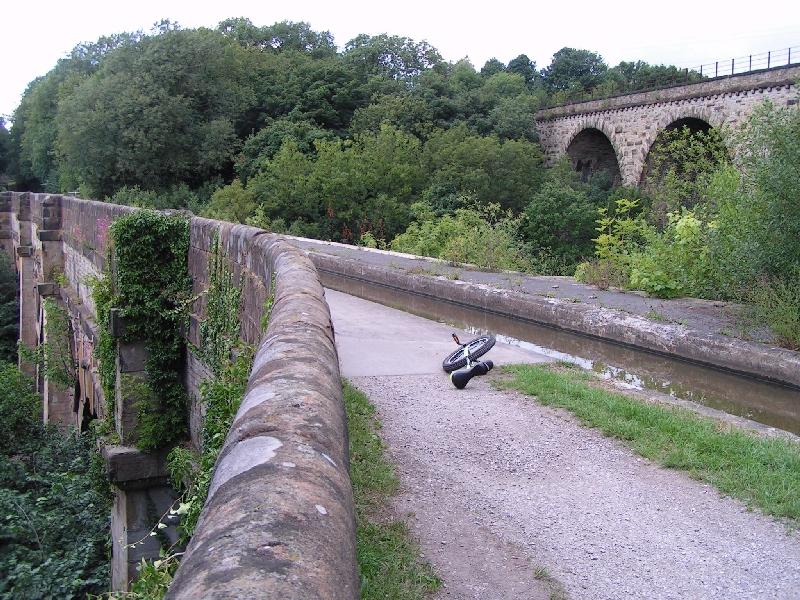
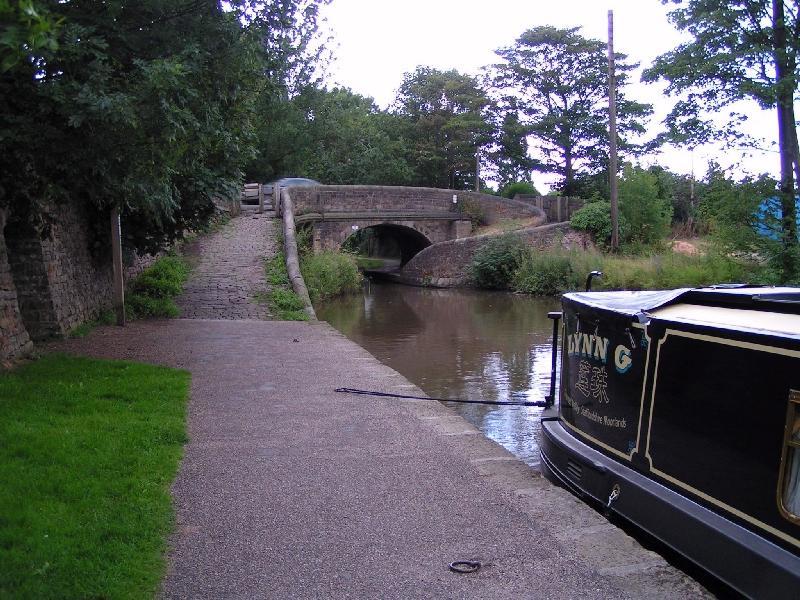
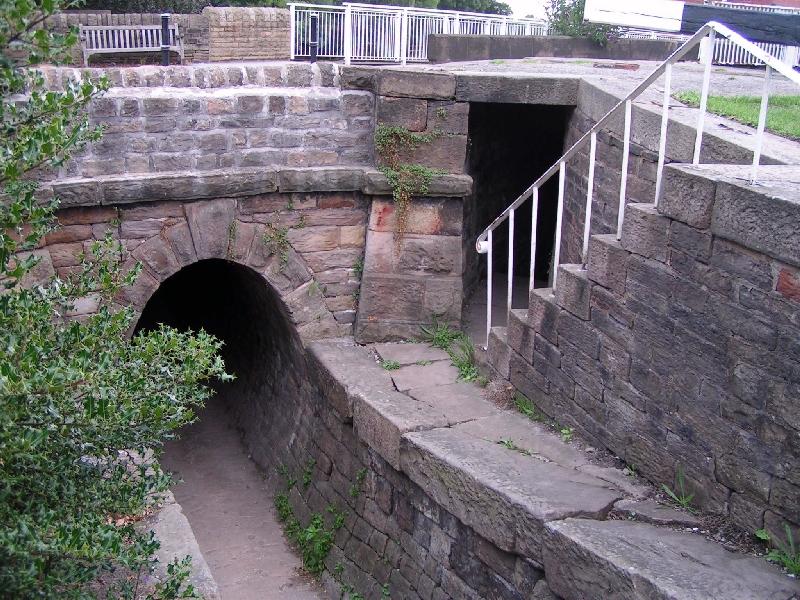

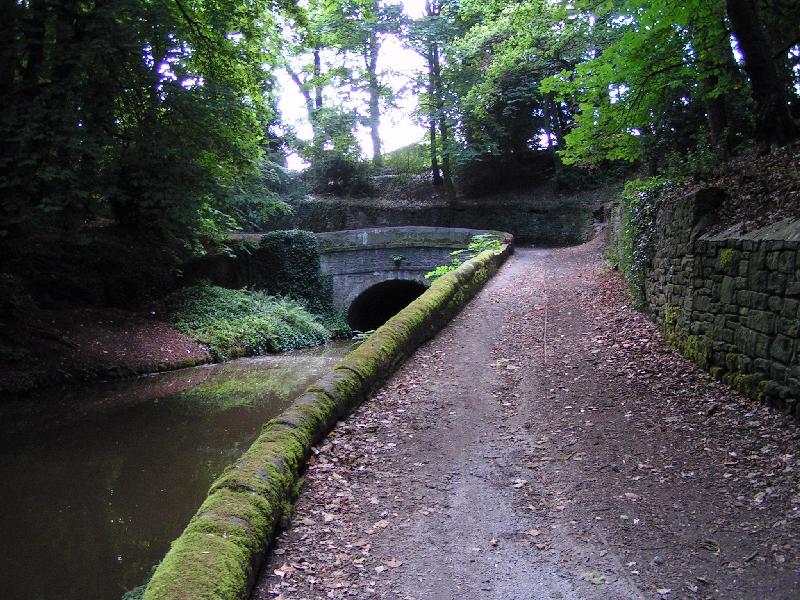
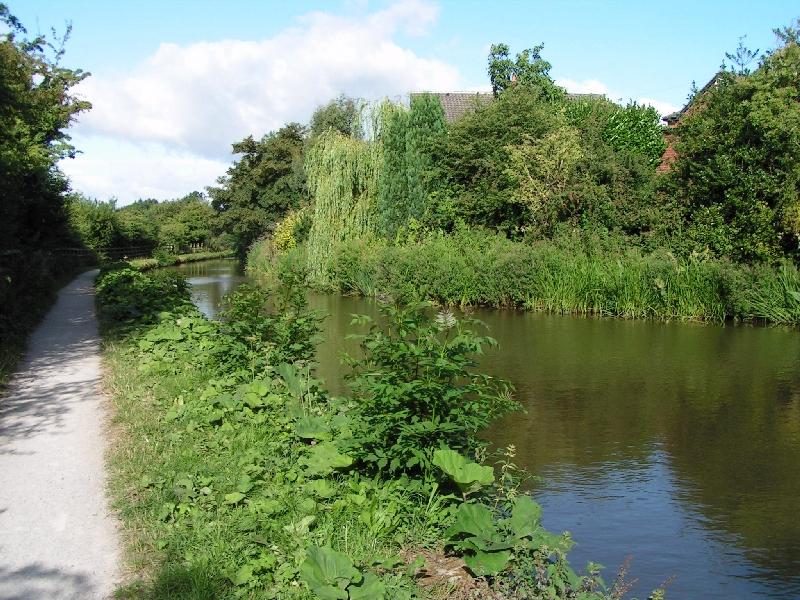
 Expect pics sometime.
Expect pics sometime.